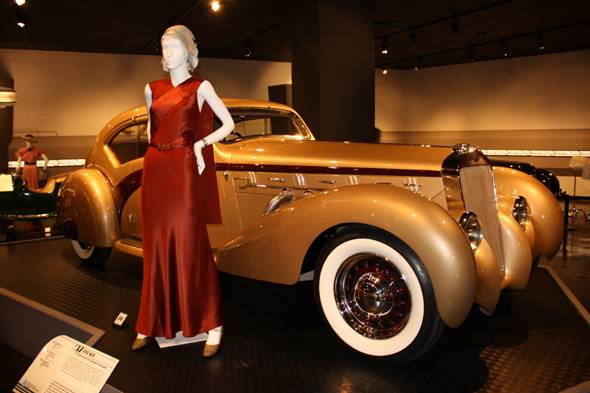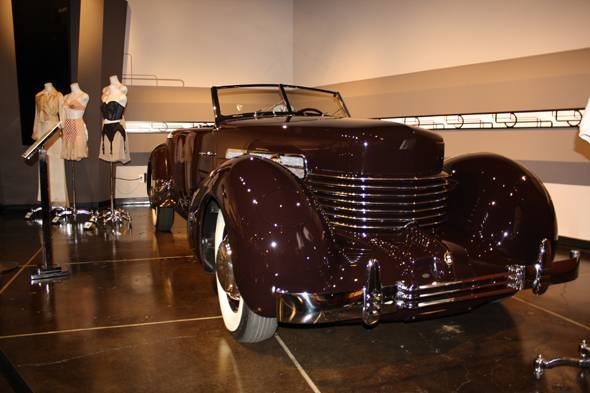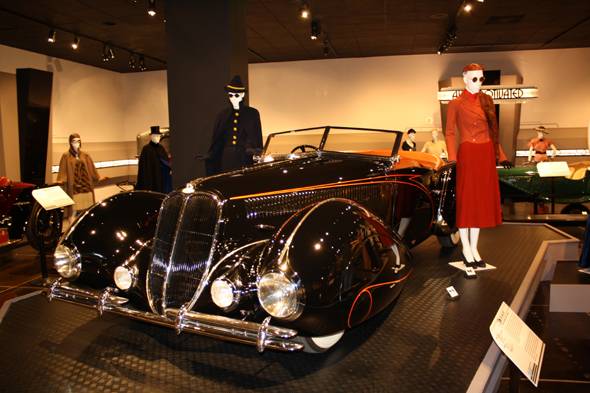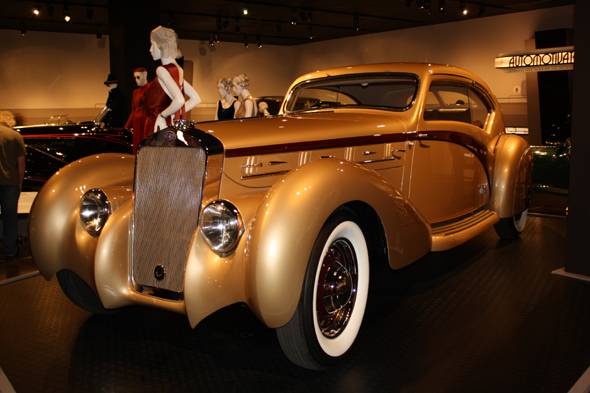Automotivated: The Crossroads of Fashion and Automobile Design
The Phoenix Art Museum and the Petersen Automotive Museum have just put the finishing touches on a new exhibit that will run at the Petersen’s Los Angeles facility through late January. Titled Automotivated: Streamlined Fashion and Automobiles, the collaborative exhibit attempts to demonstrate the similarity of design concepts that existed in the fashion and automotive realms of the early 20th century, with particular stress placed on the Art Deco and Streamlining movements of the 1930s. As one would imagine, the Petersen contributed the automotive element of the exhibit (all but one of the featured vehicles emanates from the museum’s permanent collection) while the Phoenix institution, which maintains one of the country’s only dedicated museum collections of fashion history, contributed the clothing and related objets d’haute couture.
During an informal media preview conducted last Friday, Petersen curator Leslie Kendall and the Phoenix Art Museum’s Curator of Fashion Design Dennita Sewell explained how the relationship between the two institutions grew out of a successful 2007 collaboration on Curves of Steel, a highly regarded all-automotive exhibit staged in Phoenix that included a handful of Petersen cars. As Sewell explained, a then-concurrent fashion exhibit just down the hall from Curves of Steel that was also titled Automotivated began to explore the relationship between the two fields of design, but she felt that a deeper examination of the intersection between fashion and cars easily warranted a future exhibit, one that has now come to fruition.
There is little doubt that the exhibit provides a bevy of charming eye candy for both automotive aficionados and fashionistas. The Petersen’s finely detailed 1937 Delage D8-120 Aerosport, 1937 Cord 812 Sportsman and 1938 Delahaye Type 135M wonderfully illustrate streamlining principles and Art Deco cues that were then so dominant in European and American car design. Likewise, the Phoenix Art Museum’s contribution of garments by Gabrielle “Coco” Chanel, Sophie Gimbel, and Hattie Carnegie, as well as vintage accoutrements such as perfume bottles and original 1930s Vogue covers, presents a substantial overall picture of the fashion aesthetics of the early to mid-20th century. But while it is reasonably clear that both fields drew considerable influence from the dominant design styles of the time, the exhibit is less successful in demonstrating how one field unequivocally affected the other. Nevertheless, as we can reasonably assume that whoever drove these supercars of the day was likely clothed in the ostentatious styles that are on display, the exhibit does sufficiently establish the interwoven nature of the haute cultural fabric to which these two disciplines inexorably belonged.
For more information and visiting hours:
















